Current Pediatric Research
International Journal of Pediatrics
Study of changes in knowledge, skill and attitude in parents with a community-based interactive program on ECD promotion in rural india.
Nandita Chattopadhyay1*, Swati Basu2
1Departmentof Pediatrics, MGM Medical College, Kishanganj, India
2Udbhaas Child Development Centre, Kolkata, India
- Corresponding Author:
- Nandita Chattopadhyay Department of Pediatrics MGM Medical College, Kishanganj, India E-mail: chattnan@gmail.com
Received: 28 July, 2023, Manuscript No. AAJCP-23-112226; Editor assigned: 31 July, 2023, Pre QC No. AAJCP-23-112226 (PQ); Reviewed: 14 August, 2023, QC No. AAJCP-23-112226; Revised: 21 August, 2023, Manuscript No. AAJCP-23-112226 (R); Published: 31 August, 2023, DOI:10.35841/0971-9032.27.07.1959-1967.
Introduction: Early childhood is the period of most rapid brain development. Early Childhood Development (ECD) is considered a prime investment for future prosperity in all dimensions, and the nurturing care framework provides a roadmap for promoting ECD. The deliverables for Nurturing Care (NC) are simple and affordable but require a robust delivery system with multi-stakeholder involvement to reach all caregivers, who are the ultimate implementing agents. Determining how to develop an effective ECD-NC delivery system can be a perplexing primary healthcare issue, unique to each country and community.
Objectives: To devise a cost-effective and sustainable program through the mediation of trained ECD activists from the community and to promote ECD-NC in remote, rural India by motivating and empowering mothers to implement nurturing care.
Method: In a rural community with an estimated 8,000 children between the ages of zero and six, eight local women were trained on ECD and NC delivery techniques. These women conducted an intensive and sustained 22-week awareness program in the form of weekly mother-child group meetings, in which more than 800 mothers participated. The impact of the program on the mothers’ knowledge, attitude and practices was assessed by the investigating team.
Results: Comparing the baseline and end-line data revealed a significant change (p<0.005) in the knowledge, attitude and practice of parents, with respect to the nurturing care framework, following the participatory intervention program. When questioned directly about new knowledge or skills they had acquired, mothers mentioned making toys at home (62.8%), spending more time and engaging with children (65.1%), talking, telling stories, and reading with the child (21%).
Conclusion: Training ECD activists in the community to conduct regular, sustained group activities with mothers is a simple, cost-effective way to reach large populations simultaneously and bring about a tangible change in ECD promotion.
Keywords
Early Childhood Development, Nurturing Care, Community Participation, Parental Awareness, Knowledge, Attitude, Practice
Introduction
Early childhood is the period of the most rapid growth and development in human life. The brain develops at a prolific rate during the early years, attaining 90% of brain growth by 5 years of age. Early Childhood Development (ECD) is today considered a prime investment for future prosperity in all dimensions: physical, cognitive, social, emotional, financial, and ethical. It reduces health inequities and boosts cognitive, social, and economic development, thereby promoting a national uplift. Proper ECD not only has a lifelong effect on an individual but also an intergenerational impact: successful, stable parents raise better progeny. Thus, to quote UNICEF, “Early childhood development is the key to a full and productive life for a child and to the progress of a nation.” Failure to provide nurturing care to the vulnerable population in early life may lead to increased mortality and morbidity and less human productivity, thus perpetuating the vicious cycle of poverty and social and economic inequities [1].
The importance of the early years of life, particularly the first 2000 days, has been recognized as the critical window of opportunity for intervention; hence, experts across the world have prioritized ECD to ensure optimum brain development for every single child. The Lancet series on ECD in 2007, 2011, and 2017 provided a plethora of scientific evidence to support the importance of ECD; the Nurturing Care Framework (NCF) was established by the WHO at the 71st World Health Assembly in 2018 [2] to channelize science into action. The NCF provides a comprehensive structure for promoting ECD, comprising five pillars: good health, adequate nutrition, safety and security, early learning opportunity, and responsive caregiving. The global emphasis on ECD is evident from the Sustainable Development Goal (SDG) charting, where SDG 4.2.1 is dedicated to young children’s health, safety, and development, clearly mentioning the right of all children to “survive, thrive, and be transformed, leaving no one behind” [3]. This calls for urgent interventions for the millions of vulnerable children who are at risk of not achieving their developmental potential. We are aware that even today 250 million children are at increased risk in the first 5 years of life, the majority hailing from Africa and Asia. In the lower-and middle-income countries reaching out to all children remains the greatest hurdle. A large underserved population, geographical remoteness, and lack of awareness among parents and health care providers are the major hindrances faced. Governments are coming up with various schemes and policies, but implementation remains a problem. Nurturing care should be provided by the parents to the child, and it is the parents who need to be empowered. No policy will be of any use unless we can reach every parent in the community, which is easier said than done.
India, with 164.5 million 0–6-years-old population [4], has a massive load of under-5 children at risk of poor development. Moreover, 74% of these children reside in villages, often marginalized, unreachable, and unaccounted for. Reaching out to this huge, partially hidden population is a Herculean task. India, with her robust primary health care system and a potent force of field level workers, has come up with promising schemes and policies. Considering that parents can be reached only by the Field-Level Workers (FLW) at the community level, the Home-Based Care for Young Children (HBYC) program was launched in 2018, a joint venture by the Ministry of Health and Family Welfare and the Ministry of Women and Child Development for children ages 3–15 months. The ECD component was included in comprehensive childcare. Under HBYC, all frontline workers are required to continue home visits to counsel the caregivers and monitor various aspects of ECD as the child grows.
Although this was an impressive endeavor to bridge the gap in ECD promotion, some lacunae still remain in the initiative. Emphasis is more on health and nutrition whereas responsive caregiving and early learning opportunity, the two most important ingredients for cognitive and socio-emotional development, were not addressed adequately, largely due to the dearth of knowledge and skill among the FLWs. Most FLWs do not have the confidence to train parents on how to engage with their children and learn to be responsive parents. Moreover, because ECD is an added component to the mother and childcare activities, FLWs, who are reluctant to emphasize added issues, are disinclined to address it.
The deployment of dedicated FLWs for ECD promotion and their reaching out directly to parent groups was considered an effective alternative in which early learning opportunities, responsive caregiving, and early stimulation could be stressed and parents could be empowered to successfully deliver active nurturing care to their children and not simply be passive recipients of information.
With this in mind, we started a pilot project in rural India to train and empower parent groups on ECD promotion through regular interactive sessions led by a group of trained persons from the community. We assessed the impact of the 22-week program on the mothers’ knowledge, attitudes, and practices. This study has previously been presented as a poster at the 17th International Child Neurology Conference, 2023, in Antalya, Turkey.
Materials and Methods
We made a novel endeavor to reach out to mothers in a rural community to impart knowledge and skills on nurturing care for children 0–3 years old. The program was based on a participatory mode and conducted by local field-level workers trained in ECD and nurturing care and designated as Community ECD Activists (CECDAs). A team of developmental specialists monitored the program.
Study Area
The project was adopted in Budge Budge II Block in South 24 Pargana District, West Bengal, which has a total population of 215,918 and a 0–3-year-old population of 8,418. Of this rural population, 34.11% fell below the poverty line.
Target Population
Initially, we targeted 1200 mothers for intervention, but the CECDAs could reach only 1103 mothers. Of the group, 820 mothers voluntarily enrolled for the 22-week program, and 470 mothers continued until the end (Table 1).
| Number of CECDA trained | 8 |
|---|---|
| Mothers reached by CECDA | 1103 |
| Mothers enrolled for group meets | 820 |
| Mothers attending till the end | 470 |
| No of mother meets held | 1408 |
Table 1: Study Population
Eight local girls were recruited from the community and given intensive in-house 6-day training, focusing on ECD-nurturing care details, early stimulation, parenting skills, and how to train mothers. Following this, they were engaged in identifying mothers of 0–3-year-old children through home visits, conducting a baseline survey to pick up demographic data and information on ECD nurturing care status (based on the MICS IV-based questionnaire) and motivating mothers to join the mothers’ groups for intervention. They then conducted regular mothers’ meetings to promote ECD-nurturing care among parents using a participatory mode.
The mothers were divided into two groups according to whether their child’s age was 0–1 year or 1–3 years. Each CECDA had 100–150 willing mothers in her area; the mothers were divided into eight groups of 10–15 members each. They held regular mother–child group meetings 4 days a week; two meetings a day (one 0–1 year group and one 1–3 years group) (Figure 1). Thus, simultaneously, 64 mother-meets were being held every week. Over a period of 22 weeks, the CECDAs conducted 1408 such meetings. Thus, each mother and child had 22 interactive sessions with the CECDAs.
Activities at these meets were conducted according to a structured program, provided through a colorful activity guide. The groups were also provided with an ECD toolkit that included reading materials, visual aids, teaching–learning materials, toys, and raw material for DIY programs. Each day’s activity included some discussion on childcare, sharing of views, demonstration of early stimulation methods with active participation by mothers and children, and various DIY activities to make simple tools and toys for stimulation. At the end of the program, the CECDAs conducted an end line survey using the previous questionnaire with the 470 mothers who continued to the end.
We employed various methods to study the impact of this program, for which data were collected from the mothers provided with the interventions (henceforth referred to as the study group) and a socioeconomically matched control group with no intervention.
At the end of the program, 228 mothers were randomly selected from the study group for impact assessment from subjective responses using a questionnaire with open-and closed-ended questions. Of these, 87 had a child 0–1 year old, and 141 were mothers of 1–3-year-olds.
The baseline and end line survey data on the study group was also analyzed, proceeding with a quasi-experimental approach, in which inter temporal (pre-and post-intervention) changes were captured and compared. In total, 470 mothers, for whom both baseline and end line data were available, were selected in the final set for the pre–post analysis.
For a qualitative assessment Focus Group Discussions (FGDs) with mothers from the intervention and comparison groups were also designed and conducted by an external group of experts (a faculty team from the Department of Community Medicine of the Medical College, Kolkata). The qualitative component also explored the discernible effects of intervention, if any, on the children.
Both surveys (base line and end line) were conducted using a semi-structured questionnaire that generated quantitative evidence on a) the mothers' socioeconomic characteristics and b) their parenting behavior and practices regarding nurturing care. The parameters were based on the MISC IV questionnaire, devised and widely used by UNICEF in over one hundred countries [5]. For a quantitative assessment, all the descriptive parameters were quantified by a scoring system (0: unsatisfactory, 1: somewhat present, 2: adequately present).
We entered the data into MS-Excel spreadsheets and conducted an analysis after cross-checking to ensure consistency, reliability, and accuracy, using IBM SPSS-19 software. We used frequencies and percentages for categorical variables and mean, range, and Standard Deviation (SD) for continuous variables. Comparisons were done using unpaired t-test or Chi square test with P-value estimation. We considered an alpha level of 5% statistically significant.
This being a service project (in collaboration with UNICEF) relating to awareness generation, with no medical intervention and with a questionnaire-based analysis, an approval from any ethics committee or IRB was not taken, as we had considered it as a “less than minimal harm project”. Anyhow, we had taken prior informed consent from the participants.
Results
The CECDAs conducted a baseline survey on 1103 mothers in the community and motivated them to enroll for the regular mother–child meetings; 820 mothers agreed. A total of 1408 meetings were held. Few mothers were defaulters while some left the program midway due to personal issues; 470 mothers continued until the end. The demographic profile of the mothers is shown in Table 2.
| Mothers' mean age | Mother’s Literacy | % age | Mother’s Occupation | % age | Family Income/month | % age | Number of Children | % age |
|---|---|---|---|---|---|---|---|---|
| 25 years | Illiterate | 3.2 | Housewife/Homemaker | 80.3 | Less than Rs 5000 | 36.3 | 1 | 58 |
| Up to upper primary | 47.3 | Small business | 9 | 5000-10000 | 55.4 | 2 | 33 | |
| Secondary | 26 | Teaching | 1.1 | 10000-20000 | 6.8 | More than 2 | 9 | |
| Higher secondary | 16.2 | Others | 9.6 | Above 20000 | 1.5 | |||
| Graduate and above | 7.3 |
Table 2: Demographic profile
Through the subjective assessment of 228 randomly selected mothers, we sought answers to questions like a) mothers’ responses to the program, b) families’ responses to the program, c) knowledge and skills gained by mothers, d) mothers’ perspectives on the program’s impact, and e) behavioral changes noted in the child, if any.
The mothers responded spontaneously to predesigned questions without any prompts or suggestions. They unanimously responded that they liked the program and wanted it to continue. Of the 228 mothers, 216 mentioned that their family (husband, mother-in-law, and others) appreciated the program and encouraged them to attend, indicating a secondary impact on the family.
Regarding knowledge acquired by the mothers, results showed that 40.35% of mothers mentioned the importance of playing with the child as the most important message, 25.56% of mothers mentioned positive parenting (proper childcare, disciplining without harsh punishment, and maintaining a healthy home environment), and a few of them mentioned that they had become aware of early learning through play, utilizing articles of daily use.
Mothers were impressed by the new skills they had acquired over the previous few months. Of the mothers, 62.28% mentioned making toys at home with locally available articles; 45.67% mentioned saying rhymes with actions and singing; 21% said talking with the child, telling stories, and reading to the child were most important; and some mentioned drawing and coloring and making nutritious food (Figure 2).
When asked about their concerns about their children’s welfare, the mothers highlighted proper nutrition (40.79%); child safety (38.6%); keeping track of development; promoting early learning and communication skills; providing attentive, responsive parenting (55.7%); proper play (37.28%); health and hygiene (23.25%), and academics (14.0%) (Figure 3).
Considering their knowledge and skills, we looked into the behavioral and attitudinal changes generated in the mothers, who revealed that 65.1% of mothers were spending more time with children, 51.1% were actively engaging with the child, and eight mothers mentioned both parents playing with child.
Mothers also mentioned behavioral changes noted in the children (Figure 4), which included playing with other kids, mixing with others, and better socialization in 41.2%; playing meaningfully with toys in 28.51%; developing new skills, being more active, following instructions, and learning selfhelp skills in 21.93%. Another 17.11% mentioned better communication skills and learning to talk. One mother commented that her child has started to ask questions! Overall, CECDAs noted that the children were happy, enjoying the sessions, and replicating activities at home. Some remarkable statements made by mothers included “My child is less attached to mobile phones now,” “My mother-in-law is replicating the high-protein nutritional supplement recipe taught at the sessions,” and “We are trying to control our emotional outbursts to maintain a peaceful home environment.”
We also assessed the impact of this intervention by analyzing the baseline and endline data on the 470 mothers who completed the 22-week program. The parameters examined to assess the status of nurturing care included time spent by parents playing with child, reading to the child, singing rhymes to the child, taking the child out for play, availability of meaningful toys at home, availability of at least three ageappropriate books at home, how long the child stays alone or with another child less than 10 years old at home, responsive feeding, father’s involvement in childcare, childcare when mother is busy and mode of discipline. The responses to all these parameters were scored from zero to 2 (0: unsatisfactory, 1: partially present, 2: adequately present) based on the ECDNC guidelines details of the scoring is provided as an annexure [6,7]. The baseline and end line scores are compared and depicted in Table 3 and Figure 5.
| No of children receiving adequate Nurturing care (score 2/2) out of total 470 n=470 | p-value | ||
|---|---|---|---|
| PARAMETERS | BASELINE | ENDLINE | |
| Toys | 41 | 458 | <0.0001 |
| Story telling | 146 | 245 | <0.0001 |
| Reading | 73 | 165 | <0.0001 |
| Books | 52 | 237 | <0.0001 |
| Rhymes/singing | 188 | 336 | <0.0001 |
| Taking out | 215 | 303 | <0.0001 |
| Child alone | 336 | 375 | 0.0038 |
| Father in childcare | 214 | 308 | <0.0001 |
| Childcare when mother busy | 38 | 145 | <0.0001 |
| Positive discipline | 48 | 85 | 0.0007 |
Table 3: Comparison of proportion of children achieving adequate level of nurturing care
Comparing the impact on the various parameters showed maximum effect from having proper toys (often homemade) and books at home, telling stories, and singing with the child.
Culturally, the children were not left unattended even before the intervention. Minimal change had occurred in positive disciplining techniques, taking the child out to play, reading to the child, and the father’s involvement (Figure 6). Hours spent in interactive play have purposefully been omitted from the chart because during the baseline survey, most mothers mentioned that they spent long hours with the child but had no idea about interactive play. During the endline survey, however, their responses were much more focused and critical in assessing their own involvement in interactive play. Hence the two responses were not considered comparable. In any case, after the intervention, 271 of 470 mothers were devoting more than 4 hours a day to interactive play whereas the remaining 291 mothers spent 2 hours a day on this activity.
In this intervention program we were dealing with children 0–3 years of age. Because the developmental trajectory and the prerequisites for nurturing differ a lot in the first year of life compared with the second and third years, parental concerns also tend to shift. Keeping this in mind, we divided our results into two cohorts, 0–1 year (0–365 days) and 1–3 years (366 days to 3 years of life). We noted several differences in the data obtained through the subjective questionnaire administered to the 228 mothers chosen randomly at the end of the program. Issues of greater concern in the 0–1 year age group were safety and security, food and nutrition, both parents’ involvement, spending time with the baby, and providing motor and sensory stimulation. Issues of greater concern in 1–3-year-old toddlers were cognitive development stimulation; rhymes, songs, and coloring; the child’s communication skills; and socialization (Table 4 and Figure 7).
| Parameters | 0-1 year (%) | 1-3 years (%) |
|---|---|---|
| Safety and security | 47.5 | 28.57 |
| Food and nutrition | 57.5 | 17.14 |
| Both parent involvement | 5 | 2.86 |
| Spending time with baby | 80 | 42.86 |
| Providing motor and sensory stimulation | 41.25 | 20 |
| Cognitive development stimulation | 8.76 | 47.62 |
| Rhymes/songs/colouring | 49.52 | 30 |
| Child’s communication skills | 19.05 | 13.75 |
| Socialization | 40.95 | 28.75 |
Table 4: Comparative table of the 2 age-groups
The comparative data from the baseline and end line surveys for the two age groups (0–365 days and 366 days to 3 years of life) have been further segregated and analyzed separately for a better understanding. We compared the average scores for each parameter and noted a statistically significant difference in both groups, more so in the older age group (Table 5).
| S.No | Parameters | Birth to one year n=200 | >1year to 3 years n=270 | ||||
|---|---|---|---|---|---|---|---|
| average score | average score | ||||||
| Baseline | Endline | p-value | Baseline | Endline | p-value | ||
| 1 | Toys | 0.67 | 1.97 | p=0.0268 | 0.71 | 1.97 | p=0.0007 |
| 2 | Story telling | 0.64 | 1.03 | (statistically significant) | 1.07 | 1.49 | (extremely significant) |
| 3 | Reading | NA | NA | 0.74 | 1.42 | ||
| 4 | Books | NA | NA | 0.69 | 1.62 | ||
| 5 | Rhymes/singing | 1.13 | 1.62 | 1.22 | 1.69 | ||
| 6 | Taking out to play | 0.94 | 1.38 | 1.26 | 1.55 | ||
| 7 | Child alone | 1.7 | 1.8 | 1.59 | 1.69 | ||
| 8 | Father in childcare | 1.26 | 1.51 | 1.35 | 1.57 | ||
| 9 | Childcare when mother busy | 1.05 | 1.29 | 1.02 | 1.28 | ||
| 10 | Positive discipline | NA | NA | 0.88 | 1.15 | ||
Table 5: Comparison of Average Scores in All Parameters
For a qualitative assessment and to avoid internal bias, an external group of experts also conducted FGDs with these mothers as well as a set of mothers who did not receive this intervention. The thematic responses reveal changes in knowledge and attitude in the group who experienced the intervention. The responses clearly point toward an awareness of responsive parenting and the importance of early learning opportunities.
Discussion
We are well aware of the far-fetched implications of early childhood development in the first few years of life and its implication as a critical element in the intergenerational process of human development [6-8]. ECD is multidimensional; hence the best approach to promote ECD is multipronged, focusing on the five pillars of nurturing care.
Simple interventions consistent with the NCF are highly costeffective measures. A recent study on a group-based parenting intervention for children 6–24 months of age, conducted in rural Kenya, reported a high benefit–cost ratio of 15.5, implying that an investment of $100 on nurturing care would generate a long-run benefit of about $1500 [9]. In terms of outcome, a $100 investment led to 0.37 SD improvements in cognition, 0.30 SD improvements in receptive language, and 0.16 SD improvements in socio emotional outcomes. A similar randomized trial from Odisha, India, yielded comparable results: group-based intervention brought about a change in cognition (0.28 SD difference) and language (0.3 SD) at a cost of $38 per child per year [10].
Because parents are the pivotal persons delivering nurturing care, motivating, training, and empowering them remains the cornerstone of successful implementation of nurturing care. Conventions on the Rights of the Child clearly mention that the family (especially parents) is responsible for protecting the child's rights to survive and thrive [11]. Moreover, nurturing care is not just a number of interventions; rather, it is an understanding and thoughtful way of parental care. Hence, the task before us is not just to provide a list of things to be done with the child but rather guide caregivers on “how” to understand the child’s cues and engage with them effectively. Imparting this knowledge and skill to all parents across the country is a huge task. The service providers reaching out to parents need to be well trained, motivated, and dedicated to ECD. Parents can imbibe the new knowledge and skills only with repeated intervention. With this in mind, we rolled out our CECDA program, which showed significant changes in the knowledge, skills, and attitudes of mothers. As mothers shared their knowledge and skills with immediate family members, such as their husbands and mothers-in-law, the impact extended further to involve the entire family. Family members were receptive and encouraging, noticing positive changes in the child. The child, too, attempted to replicate the new activities at home, thus bringing about a behavioral change in the family. The most attractive activity for mothers was making simple toys at home. This honed their creativity and gave them a sense of accomplishment and satisfaction because the child enjoyed playing with them. These homemade toys mediated joint attention and engagement between mother and child.
The positive impact of parental involvement on nurturing care has been demonstrated in various studies from across the globe [12]. A recent global systematic review by Jeong et al., in 2021 on the effectiveness of parenting interventions on ECD demonstrated improvement in cognitive, language, motor, and socio emotional development; behavior; and attachment. Parenting outcomes included improved parenting knowledge, parenting practices, and parent–child interactions [13]. Studies conducted across different countries have shown that social protection policies and programs have been successful at improving ECD. These interventions include childhood care education, promotion of maternal mental health and wellbeing, and conditional cash transfer programs [14]. In Latin America, “Chile Crece Contigo” is an example of a successful multi-sectoral, evidence-based, large-scale program, funded by the Chilean government and emerging from a national consensus in which the civil society participated, the program offers high-quality ECD information for families and health care providers among its various health and education benefits. Another example of a large-scale program is “Cuna Mas” in Peru, which consists of home visiting interventions aimed at improving parenting practices; it has demonstrated a positive impact on developmental outcomes [15]. In Colombia, Ecuador, and Mexico, existing cash-transfer programs have been used to deliver ECD interventions [16]. Multiple studies across the globe, including in Jamaica, Pakistan, and Turkey, have shown that incorporating nurturing care elements into interventions improves child development and later adult outcomes. All these studies indicate that home-based and/or group-based activities with parents/care givers by FLWs are effective in small groups, the latter being more cost-effective. No consensus has yet been reached regarding scaling up methods for ECD implementation globally. Every community has its own socioeconomic matrix, strengths, and weaknesses. So, taking lessons from the experiences of different countries, every nation will have to formulate their own unique protocol according to their needs and resources. But the bottom line remains that all parents must be reached, and community fieldlevel workers must be adequately sensitized and involved in the process of dissemination.
This study, although promising as a pilot study, has definite limitations in terms of replication and scaling up, which will be difficult unless the government adopts and incorporates this program into its existing programs. Moreover, it cannot be a stand-alone program; it needs to be incorporated into existing health care and early childhood education programs. If utilized adequately, this can serve as a bridge between the two existing programs.
Conclusion
Parental involvement is most essential in ECD promotion in a community; parents can be trained and empowered by community workers who are adequately sensitized to the philosophy of nurturing care and its implementation techniques. Regular, sustained home-based group activities with parents led by dedicated ECD activists at the community level are a simple, cost-effective way to reach large populations simultaneously and bring about tangible change in terms of knowledge, skill and attitude in parents. This simple approach may be replicated widely to empower all parents to deliver nurturing care and augment early childhood development, especially among the marginalized communities in the developing world.
Additional Information
Disclosures
Human subjects: Consent was obtained from all participants in this study. This article is based on a service project. There was no clinical intervention involved in the study. The behavioral changes in Knowledge, Attitudes, and Practices (KAP) were assessed following an awareness-generation program. This was a community-based program in collaboration with UNICEF and not an institutional study; hence, ethics committee approval was not necessary. Animal subjects: All authors have confirmed that this study did not involve animal subjects or tissue.
Conflicts of Interest
In compliance with the ICMJE uniform disclosure form, all authors declare the following:
Payment/Services Information
The project was funded by UNICEF, Kolkata Project no: IND/ SSFA20211978. Financial relationships: All authors have declared that they have no financial relationships at present or within the previous three years with any organizations that might have an interest in the submitted work. Other relationships: All authors have declared that there are no other relationships or activities that could appear to have influenced the submitted work.
Acknowledgements
The authors extend deep gratitude to the officials and field staff from the government health department for their sincere cooperation. We are deeply indebted to the faculty team from Medical College, Kolkata, Department of Community Medicine, who conducted the FGDs with the mothers and field workers. Finally, we extend our gratitude to the team of ECD activists who did the real work and made it a success. Disclaimer: The contents and view in the article are the authors’ and not necessarily that of UNICEF. Competing interest: None. Data are available upon reasonable request.
References
- United Nations Children’s Fund (UNICEF). For every child, a fair chance: the promise of equity. New York, NY 10017, USA; 2015.
- Five components of nurturing care: Nurturing care for early childhood development. 2018.
- Sustainable Developmental Goal 4. 2020.
- The Economic Survey 2018-19.
- UNICEF. Development of the Early Childhood Development Index in MICS surveys. 2017.
- Nurturing Care Handbook. 2022.
- World Health Organization. Nurturing care for early childhood development: a framework for helping children survive and thrive to transform health and human potential. 2018.
- Young ME, editor. From early child development to human development: Investing in our children's future. World Bank Publications 2002.
- Lopez Garcia I, Saya UY, Luoto JE. Cost-effectiveness and economic returns of group-based parenting interventions to promote early childhood development: Results from a randomized controlled trial in rural Kenya. PLoS medicine 2021; 18(9):e1003746.
- Grantham-McGregor S, Adya A, Attanasio O, et al. Group sessions or home visits for early childhood development in India: a cluster RCT. Pediatrics 2020; 146(6).
- Evans JL. Parenting programmes: an important ECD intervention strategy. Background Paper commissioned for the EFA Global Monitoring Report 2006.
- Aboud FE, Yousafzai AK. Global health and development in early childhood. Annual review of psychology 2015; 66:433-57.
- Jeong J, Franchett EE, Ramos de Oliveira CV, et al. Parenting interventions to promote early child development in the first three years of life: A global systematic review and meta-analysis. PLoS medicine 2021; 18(5):e1003602.
- Quezada-Sánchez AD, Fuentes-Rivera E, García-Martínez A, et al. Assessing the effect of an educational intervention on early childhood development among Mexican preschool children in the state of Oaxaca: a study protocol of a cluster randomized stepped-wedge trial. Trials 2022; 23(1):126.
- Hartinger SM, Lanata CF, Hattendorf J, et al. Impact of a child stimulation intervention on early child development in rural Peru: a cluster randomised trial using a reciprocal control design. Journal of Epidemiology and Community Health 2017; 71(3):217-24.
- Reyes ME, Chavez GB, Little BB, et al. Community well-being and growth status of indigenous school children in rural Oaxaca, southern Mexico. Economics & Human Biology 2010; 8(2):177-87.
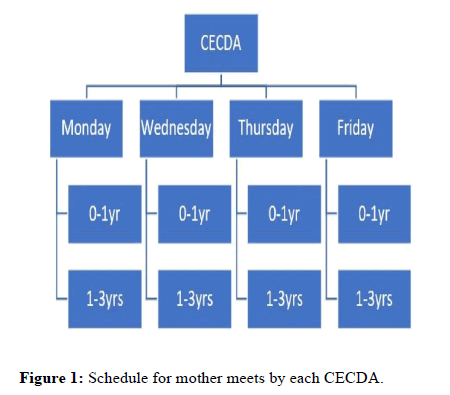
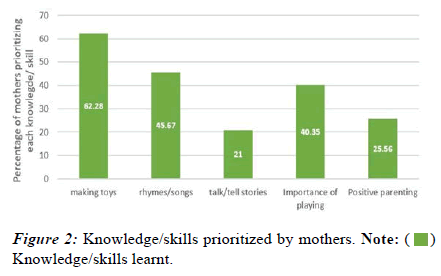
 ) Knowledge/skills learnt.
) Knowledge/skills learnt.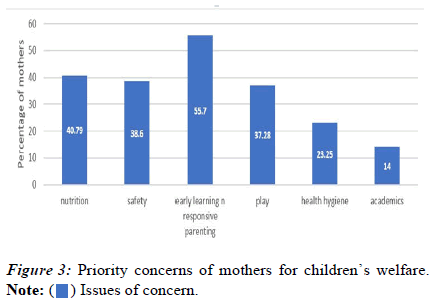
 ) Issues of concern.
) Issues of concern.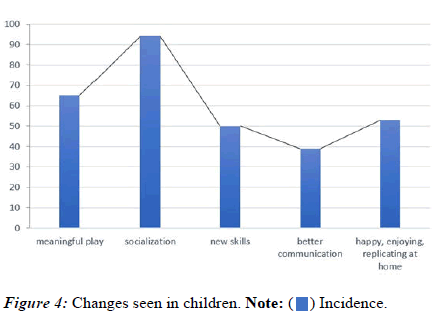
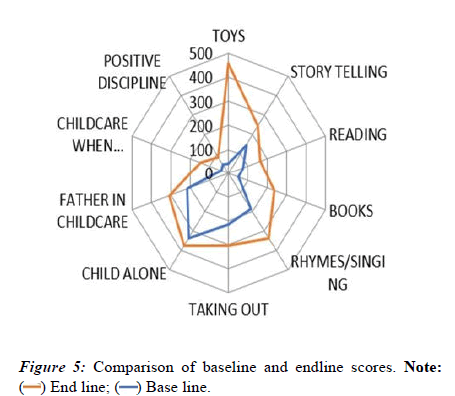
 ) End line; (
) End line; ( ) Base line.
) Base line. ) Acquired after intervention; (
) Acquired after intervention; ( ) No change.
) No change.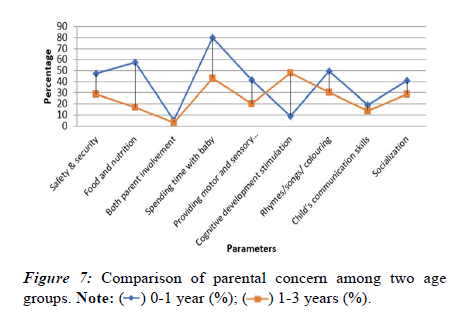
 ) 0-1 year (%); (
) 0-1 year (%); ( ) 1-3 years (%).
) 1-3 years (%).